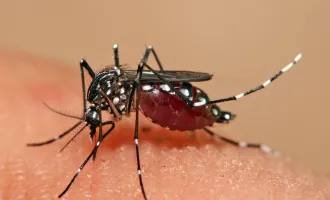Students Plan New Student Government Structure
Planning is under way to create a new student government that would merge the two student governments and unify the student body under one identifiable banner.
Student representatives from the Schools of Dentistry, Medicine, Nursing, Pharmacy and the Graduate Division began meeting in October as a planning committee to provide input on a new student government, to be known as the Graduate and Professional Students’ Association (GPSA).
Their goal is to produce a new student government structure that will improve the campus-wide student representation, as well as improve how students are served by the governing body.
“We're hoping to increase interprofessionalism and efficiency with the proposed governing structure,” said Joseph Foy, GSA president and member of the planning committee.
“The new structure should allow for greater collaboration between students in different schools and programs, and improve communication with the administration.”
The idea to reform the current structure arose out of discussions during the previous academic year between then-ASUC president Doug Jacobs, then-GSA president Jason Tien and current Nursing Student Council president Arielle Bivas. They identified three major issues: inconsistent two-tier representation, barriers to collaboration and duplication of services.
Inconsistent two-tier representation
Currently, dental, medical, and pharmacy students are represented by the Associated Students of University of California (ASUC) at the campus-wide level, while graduate, nursing and physical therapy students are represented by the Graduate Students’ Association (GSA).
However, dental, medical, nursing and pharmacy students also have their own student governments in their respective school administrations (e.g. Associated Students of the School of Medicine in the School of Medicine) to help represent them on issues pertinent only to their respective schools.
While physical therapy students have a registered campus organization to represent their interests to the administrators of their program, it is not an officially sanctioned body of UCSF. Furthermore, graduate students only have the GSA to convey their graduate-specific concerns to the Graduate Division.
Barriers to collaboration
While both the ASUC and GSA provide a forum where students can express their ideas to an interprofessional audience and allow them to receive interprofessional feedback, the composition of this interprofessional audience is only half what it could be.
Similarly, campus administrators who only discuss issues pertaining specifically to the ASUC or GSA miss input from a significant portion of the student population, because the entire student body is not represented at those discussions.
Now that interprofessionalism and research translation are the new mantras of UCSF, the historic separation of students into either “clinician” or “researcher” roles appears to be an outdated model.
Duplication of services
Most UCSF students pay a quarterly fee to either the ASUC or GSA to help the two organizations carry out their mandate to represent them on student issues to the UCSF administration and other University of California (UC) campuses. These fees also support many student endeavors, which include, but are not limited to, campus-wide student events, functions held by registered campus organizations and conference travel.
However, the separation of the pool of money between the ASUC and GSA makes it challenging to assess whether the needs of students are being fully met or could be pooled to better serve them.
To aid the committee in their task, the Office of Student Life conducted extensive research this summer to reconstruct how the structure and function of the two student governments evolved over the years, how student fees are distributed to the various student governments, as well as how other UC campuses have structured their student governments.
This information is helping the planning committee make informed decisions on the role of the executive board of the new unified student government, and how students in GPSA will serve and represent all registered students at UCSF.
As of now, the planning committee proposes that the GPSA executive board be comprised of two bodies: (1) an executive council, consisting of the president and several supporting officers, who will serve as executive representatives of the student body to UCSF and the rest of the UC system, and (2) an academic council, comprised of student representatives from each of the individual student governments, that will serve as the liaison between the GPSA and those governments.
The executive and academic council structure “provides an optimal format to delegate responsibilities, while ensuring that students in each individual student government can have their voice heard,” said ASUC President and planning committee member Austin Walker.
In the next month, the planning committee will finalize specific details of the GPSA’s mission, its day-to-day operations and the fees levied from the student body to fund the GPSA.
Formation of the GPSA will lead to the dissolution of the ASUC and GSA. However, it will also lead to the official creation of new student governments for graduate and physical therapy students, giving them an additional level of representation that all the other students at UCSF have. The planning committee is also working with graduate and physical therapy student representatives to finalize the structure, responsibilities and fees of these new student governments.
For the GPSA to become a reality at UCSF, three things must happen: (1) Both the ASUC and GSA must approve the proposed referendum; (2) the planning committee will provide information sessions to educate students about the referendum, and (3) a majority of UCSF students must vote in favor of the referendum, provided that at least 20 percent of eligible students vote.
All registered students at UCSF are encouraged to comment on this issue by contacting their student government representatives, as well as attend the next ASUC or GSA board meetings in December. Visit asuc.ucsf.edu and gsa.ucsf.edu for more information.


